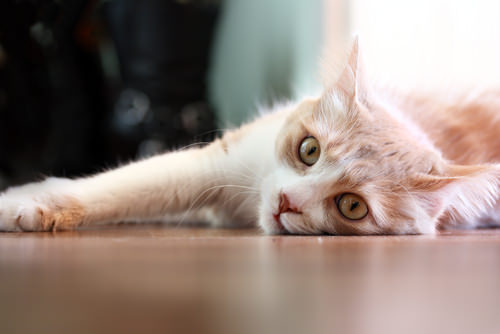
One of the questions that any veterinary professional will ask when first seeing a sick cat is “Does Your Cat Go Outside?” Cats that go outside can get into trouble and catch infectious diseases and parasitic infections. These things are not exclusive to outdoor cats because even indoor cats get lost outdoors, but your vet’s list of possibilities will include:
Trauma
Cats that roam unattended suffer more traumatic accidents. They can be hit by cars, fall from heights or be attacked by wild animals. These patients may show just about any symptom, depending on the injury, from limping to collapse. Sometimes an injured cat will merely hide and you will not even realize he is injured. Any visible wound must be pursued with professional help because many times there are further injuries that you cannot see.
Bite Wound Abscesses
Cats are territorial and will defend their space when they feel it is threatened. If your cat is hiding and acting unusual, especially if he cries or hisses when you touch him. He might have a bite wound abscess. Cats have a type of bacteria in their mouths that infects a bite wound under the skin. You may not realize your cat was bitten until days later when the bacteria have multiplied enough to create a painful abscess. Bite wound abscesses are painful and infected. They will require a visit to your vet. If you delay and the infection spreads beyond the wound, your cat could die.
Infections
Sneezing, anorexia (not eating), fever and nasal or ocular discharge are common complaints for cats. Even with no known exposure to other cats, your cat is at risk because the causative agents for respiratory infections are very communicable. Coughing and sneezing can be signs of issues that are not infectious too. Cats certainly can have allergic disease, asthma and bronchitis.
Retroviruses like Feline Leukemia (FeLV) and Feline Immunodeficiency Virus (FIV) are infections spread from cat to cat. They contribute to secondary problems from anemia, cancers and immune suppression and can look like a simple upper respiratory infection. Both can be spread by fighting and FeLV is thought to be spread through shared food dishes. Not all cats exposed to FeLV will become terminally ill, so ask your vet for current recommendations about testing and vaccination. Cats that seem to have other illnesses can actually be primarily infected with one of these dreadful viruses. Most vets can perform a quick test for these infections, so they can be ruled out or confirmed easily.
Toxicity
Any animal that wanders is susceptible to a poison risk. People always blame others for intentionally poisoning their pet, hopefully most are accidental. Certain plants can be toxic to cats and so can antifreeze and pesticides intended for use on dogs. Poisoned cats act ill with symptoms ranging from gastrointestinal signs (vomiting and diarrhea) to neurological signs (like staggering or convulsions). A cat with possible toxicity should be rushed to a vet. Many poisoning cases can be saved with appropriate and quick intervention.
Cats that spend time outside are at risk from exposure to many things, like infected stray cats, cars and poisons. They are more susceptible to injury because their environment is less controlled. Always be alert for any suggestion that your cat might be ill or injured and see a vet.
Follow me on Facebook for more cat care tips!

